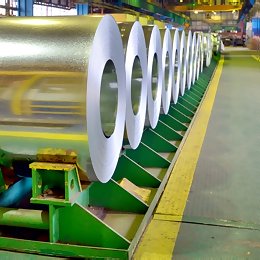
Asset-based lenders with lending exposure to ferrous and non-ferrous semi-finished and finished products, as well as ferrous and non-ferrous scrap markets, have been tracking borrowers’ purchase costs, inventory levels, and gross margins as market prices for many metal-related commodities have declined since the second half of 2014.
Without close collateral monitoring and knowledge of the actual market prices for many of these commodities, the asset-based lender can quickly learn that his borrower may be upside-down in borrower purchase costs vs. replacement costs, and borrowing base availability may not be reflective of the current market.
U.S. market prices for ferrous and non-ferrous metals in scrap, semi-finished, and finished products have experienced a continuing decline since September 2014 due to tepid domestic demand, a strong U.S. dollar, plunging crude oil prices, and increasing imports.
Additionally, a slowing economy in China has weakened demand for nearly all metal commodities. China’s economy expanded at its slowest pace in six years in the first quarter of 2015, weighed down by a slumping property market, industrial overcapacity, and sluggish overseas demand. China’s gross domestic product (GDP) rose 7% from a year earlier, in line with Beijing’s target for the full year of about 7%. Still, the growth was below the 7.4% increase for all of last year and the 7.3% increase recorded in the last quarter of 2014.
Globally, the Organization for Economic Cooperation and Development (OECD) estimated the world’s steelmaking capacity at 2.241 billion tons in 2014 and expects 120 million tons of capacity will be added by 2017. This forecast indicates that global steelmaking capacity will more than double the 1.06 billion tons of capacity registered in 2000. The OECD notes that with these developments, the global steel sector will continue to experience significant levels of excess capacity in the future.
Ferrous Metals
The market saw a disastrous start to 2015 as steel and base metal prices fell in the wake of dropping crude oil prices. In 2014, the vast majority of weekly U.S. and Canadian rig counts increased year-over-year, buoyed by strong oil demand and oil prices that remained over $90 per barrel until October. However, as oil prices dropped by more than half to a low of $44 per barrel in late January 2015, oil and gas exploration soon followed suit. Though WTI crude rose to close at $51.64 for May on April 10, 2015, the U.S. drill rig count tumbled below the 1,000 mark for the first time since mid-August 2009. For the week ended April 10th, the domestic oil rig count slipped to 760 and the number of gas rigs in operation totaled 225.
A senior official at ArcelorMittal SA, the world’s largest steel producer, indicated the U.S. steel industry is fighting to survive an import surge, with market conditions similar to those in the late 1990’s that destroyed some of the largest steelmakers, including Bethlehem Steel Corp. and LTV Corp. Andrew Harshaw, President and CEO of ArcelorMittal USA Flat Carbon, noted that “…a strong U.S. dollar, overcapacity in the global steel industry, and low material costs have created the worst market for domestic steel producers since 1998.”
Since January, U.S. and Canadian steel producers have been laying off thousands of workers at flat-rolled steel mills and tubular operations. Flat-rolled steel is the base substrate to make welded energy tubulars like Oil Country Tubular Goods (OCTG). The downturn in drilling activity has weakened demand, leading to layoffs. Since January, U.S. Steel has announced over 5,000 worker layoffs with lesser yet still impactful layoffs at OCTG producers including TMK Ipsco, Tenaris SA, and Vallourec SA.
Imports of OCTG in January 2015 totaled more than 545,000 net tons, driven by South Korea’s 254,000 tons. Landed imports equaled consumption in January at a time when almost all exploration and production companies were cutting back on drilling programs.
According to the American Steel and Iron Institute (AISI), U.S. raw steel output totaled an estimated 1.600 million net tons for the week ended April 4th as mills operated at an average capacity of 67.7%. It was the lowest weekly average since the end of January 2010, when production totaled 1.595 million net tons.
Mills have produced 23.145 million tons so far this year at an average capacity utilization of 72.9%, down 6.3% from the 24.701 million tons at an average capacity utilization of 77% in the same period last year.
Based on the American Metal Market’s (AMM) price assessment, flat-rolled steel prices continued their decline in early April, as market participants fear that a market floor has not been reached. Hot-rolled coil pricing slipped to $445 per short ton while cold-rolled coil pricing fell to $575 per short ton, FOB Midwest mill. These prices are the lowest since July, 2009. Hot-dipped galvanized pricing slipped to $660 per short ton, with one mill cutting coating extras and others open to negotiation.
Continued on Page 2...